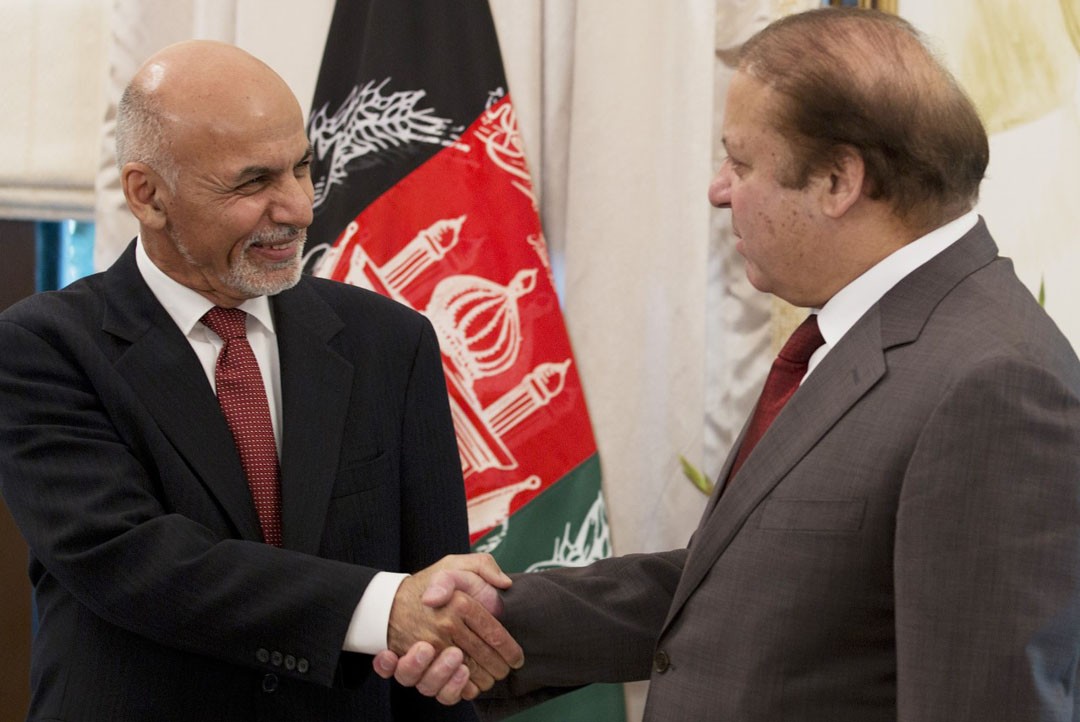
With all major stakeholders in Afghanistan on the same page, peace is doable this time

Probably, this is the first time that all major stakeholders in Afghanistan are on the same wavelength in their desire for peace. This article gives reasons for the convergence of these actors on peace as a common good in Afghanistan. On the other hand, it also identifies some major impediments, which, sometimes, dwarf the likelihood of peace efforts and suggests remedies.
Support to Afghan peace process is grounded in sheer pragmatism. Given its 14 years’ failure to decisively defeat Taliban, the US is not oblivious to the fact that without taking Pakistan on board, peace in Afghanistan is elusive. An unstable Afghanistan from Washington’s perspective may well become a breeding ground for the self-styled Islamic State, a concern equally shared by China, Pakistan and Iran.
Cognizant of the fact that without peace in Afghanistan, Beijing cannot reap economic dividends from its increasing investment in Afghanistan, China is supportive of the peace initiative. Additionally, with IS a major concern than was previously the case either with the Taliban or al Qaeda, China is worried about its own Uighur militants who have alternatively holed up across the porous Pak-Afghan border. Afghan president Ashraf Ghani, unlike his hawkish predecessor Hamid Karzai, is sure that without Pakistan’s cooperation in bringing Taliban to negotiating table, peace in the court of Kabul is a pipedream. The pragmatic Afghan president rightly deserves credit for turning over a new leaf in ties with Pakistan. Pakistan is not an exception.
Islamabad is convinced that a replica of the 1990s -- when Taliban controlled almost 95 per cent of Afghanistan at the time of US-led invasion in 2001 -- is a distant possibility. Pakistan’s success in nudging Taliban to make peace with the Afghan government is meant to kill two birds with one stone.
Any negotiated solution would entail a political stake for Taliban on the one hand and Islamabad’s good image with Afghan government and the world community at large on the other. In Taliban’s case, whereas moderates among them want peace negotiations, their hardcore fellows are certain of a Divine sanctioned victory.
India is also officially supportive of the peace scheme. Whether Delhi is happy with the Afghan government’s negotiation with Taliban -- long considered as Pakistan’s proxies -- or not, the fact is that a negotiated settlement serves India no less than it serves its regional competitor Pakistan.
The same holds true for Iran. Although the success of peace process will recognize Taliban as a legitimate actor in the Afghan state, the militia will surely have a weaker position among a wide array of other Afghan actors who are currently part of the incumbent Afghan government. Nevertheless, a number of impediments plague the Afghan peace process.
The death of Mulla Omar has impacted the fledgling Afghan peace process in the short run in the form of stalling the nascent process. In the long run, Omar’s death may only benefit the Afghan state. Although deep rifts among the Taliban -- amply demonstrated by some defection to self styled Islamic State and aversion to peace efforts -- existed even before the belated death news of Omar made headlines, the leadership crisis after Omar is a more serious challenge to the unity of the militant movement.
The present convulsion inside the insurgency -- ranging from pro-peace to anti-peace factions and from support to the new chief Mulla Akhtar Mansour, to his opponents Mulla Yaqub and Mulla Manan, Omar’s son and brother respectively -- has its both positive and negative impacts for the Afghan government. In the first place, it has complicated Ashraf Ghani’s peace efforts to reach out to Taliban warring factions. Dealing politically with a united Taliban movement was easier than its myriad factions. Secondly, Afghanistan may witness some bloody episodes of violence from more militant factions of the Taliban. Nevertheless, if Taliban leadership crisis drags on longer, a possible balkanisation of the militant movement will ensue. Resultantly, the division of Taliban will deal a fatal blow to the militants’ capacity to be any alternative to Afghan government.
Ghani’s outburst at Pakistan, after a string of bombing rocked Afghan capital in August, should short live. As things stand, Pakistani civil and military leadership are resolute in taking the militant challenge head on. The mission of pacifying Pakistan, from FATA and Khyber Pakhtunkhwa to Karachi and from Balochistan to Punjab through a mixed bag of force and persuasion, the state’s new found resolve after the Peshawar school massacre speaks volume about its waking up to the challenge of violence of all stripes. The rational course for the Afghan government is to continue with the peace process.
This is a historical opportunity. All major stakeholders in Afghanistan are on the same page. Moreover, the involvement of China -- almost the largest economic investor in both Pakistan and Afghanistan in recent years -- in the peace process on the insistence of Afghanistan is a great leap forward.
A trusted ally of Pakistan and Afghanistan, Beijing is well placed to become a guarantor of the peace efforts to succeed. Nevertheless, a major challenge will be to guard against holding peace talks hostage to militant violence. Now it is a litmus test for the Afghan and Pakistani leadership to usher in a new era of friendship. It is only possible when we decisively break with the bitter past enmeshed in mistrust and suspicion.
Will the Ghani-Sharif combine write a new chapter in history? Much will depend upon Ghani’s capability to capitalise on Pakistan’s candid efforts for peace by overcoming hawks within the Afghan government and Sharif’s success to bridle the hostile elements within the Taliban camp not to derail the process. Peace is doable this time.